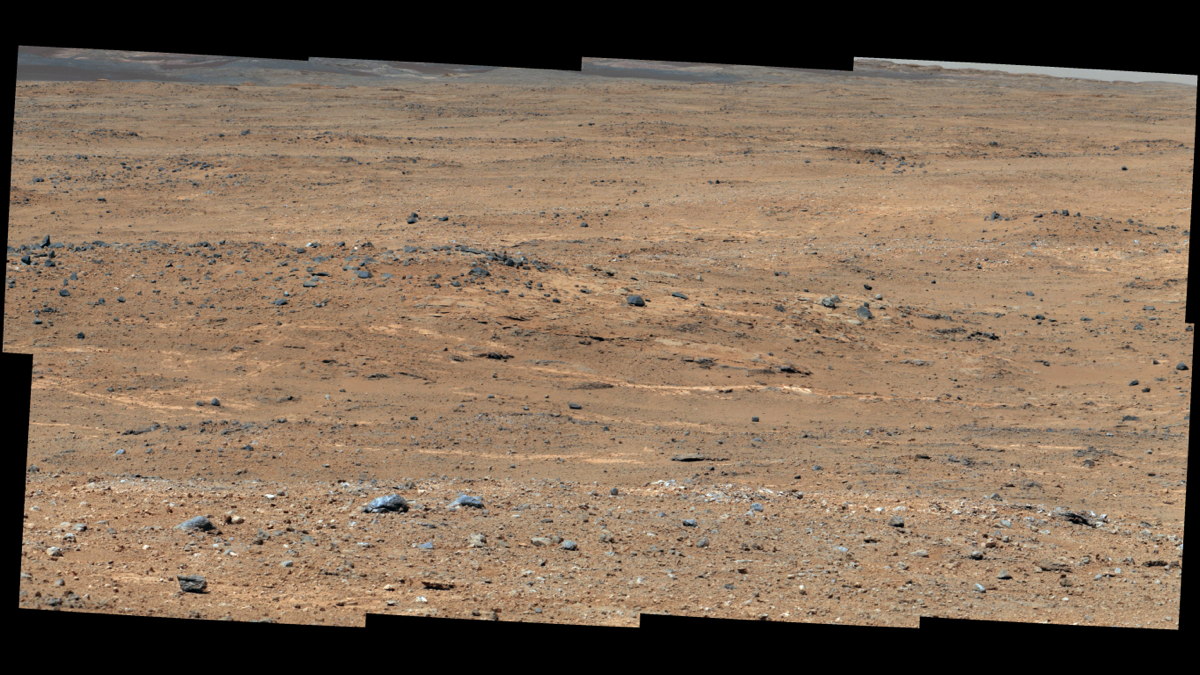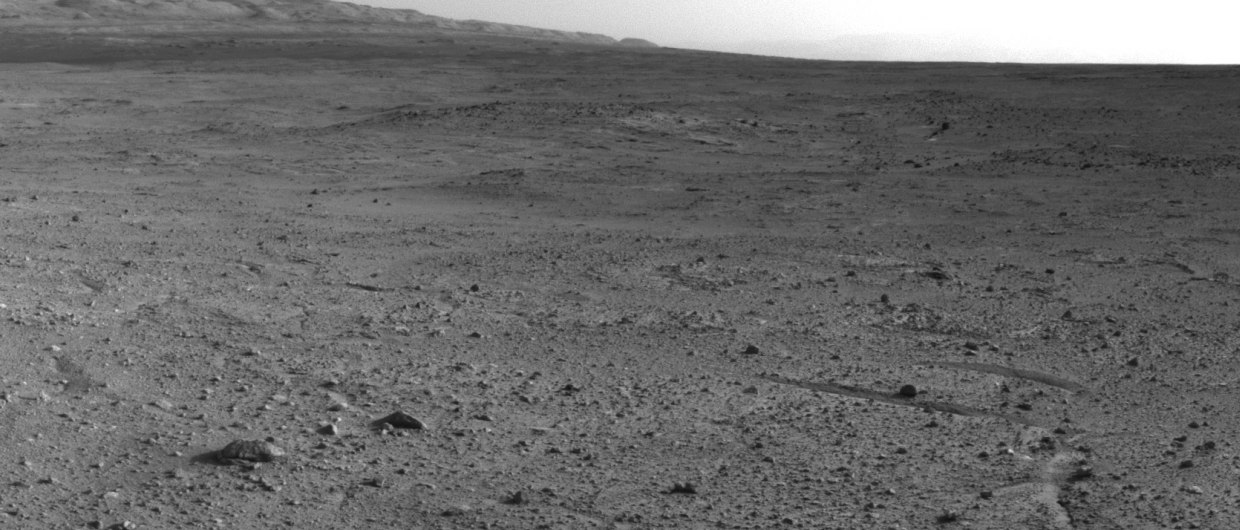Curiosity Rover Takes Longest Drive on Mars Yet

NASA's Mars rover Curiosity has made its longest Martian drive yet as it trucks along on the Red Planet.
Curiosity performed its longest one-day drive on Sept. 5, putting it within striking distance of an interesting patch of rocks called Waypoint 1, NASA officials said in a mission update today (Sept. 10). Arriving at Waypoint 1 will place the rover about one-fifth of the way to its ultimate destination: a 3-mile-high (5 kilometers) mountain dubbed Mount Sharp.
During the long drive, Curiosity traversed 464 feet (141.5 meters) to the top of Panorama Point where it took photos of the pale outcrop that is Waypoint 1. As of Monday (Sept. 9), the car-sized rover was about 245 feet (75 m) away from the checkpoint, according to NASA officials. [See the latest Mars photos by the Curiosity rover]
"We had a long and unobstructed view of the hill we needed to climb, which would provide an overlook of the first major waypoint on our trek to Mount Sharp," said rover mission planner Jeff Biesiadecki, of NASA's Jet Propulsion Laboratory in Pasadena, Calif., in a statement. "We were able to extend the drive well beyond what we could see by enabling the rover's onboard hazard avoidance system."
A NASA spacecraft in orbit around the Red Planet helped to map out Curiosity's approximately 5.3-mile (8.6 km) path to Mount Sharp. Scientists used imagery collected by the Mars Reconnaissance Orbiter to choose Waypoint 1 as a target for Curiosity. Once the rover reaches the milestone it will pause for a few days to sample the area with its arm, NASA officials explained.
Scientists want to sample the waypoints Curiosity comes across during its journey to put together a map of the Martian environment.
"We want to know how the rocks at Yellowknife Bay are related to what we'll see at Mount Sharp," Curiosity's project scientist John Grotzinger, of the California Institute of Technology, said in a statement. "That's what we intend to get from the waypoints between them. We'll use them to stitch together a timeline — which layers are older, which are younger."
Breaking space news, the latest updates on rocket launches, skywatching events and more!
In an earlier drive this summer, the 1-ton Curiosity rover got to use its own navigation system to traverse an area not vetted by its handlers back on Earth beforehand. The rover used its autonomous navigation system to drive about 33 feet (10 m) out of its 141 foot (43 m) for the trip.
NASA's $2.5 billion Curiosity rover landed inside the vast Gale Crater on Mars in August 2012 to determine if the planet could have ever been habitable for microbial life in its past. In March of this year, scientists announced that an area near the landing site called Yellowknife Bay was capable of supporting microbial life billions of years in the past.
Follow Miriam Kramer @mirikramer and Google+. Follow us @Spacedotcom, Facebook and Google+. Original article on SPACE.com.
Join our Space Forums to keep talking space on the latest missions, night sky and more! And if you have a news tip, correction or comment, let us know at: community@space.com.

Miriam Kramer joined Space.com as a Staff Writer in December 2012. Since then, she has floated in weightlessness on a zero-gravity flight, felt the pull of 4-Gs in a trainer aircraft and watched rockets soar into space from Florida and Virginia. She also served as Space.com's lead space entertainment reporter, and enjoys all aspects of space news, astronomy and commercial spaceflight. Miriam has also presented space stories during live interviews with Fox News and other TV and radio outlets. She originally hails from Knoxville, Tennessee where she and her family would take trips to dark spots on the outskirts of town to watch meteor showers every year. She loves to travel and one day hopes to see the northern lights in person. Miriam is currently a space reporter with Axios, writing the Axios Space newsletter. You can follow Miriam on Twitter.

